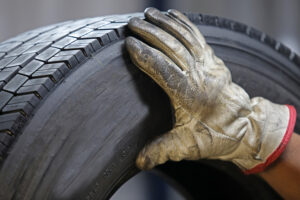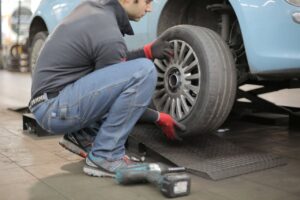Why Should Tyres Always Be Fitted In Pairs?
Whenever anything happens to your tyres, be it a puncture or a flat, they should always be replaced as soon as possible. Not only is this crucial to your safety, but also the safety of your fellow road users.
Many people often just think this means replacing one tyre but in fact, many don’t know that your tyres should be replaced in axle pairs. This is a recommended process due to any issues that not replacing your tyres in pairs can cause.
In this article, we are going to identify the reasons why you should always fit your tyres in axle pairs.
What is an axle pair?
An axle pair of tyres are two tyres that share the same axle. Basically what it says on the tin. These are either your front two tyres or your back two tyres. Cars almost always have two axles where the entire axle moves in order to turn your vehicle as you drive. However, more often than not, the axle shaft remains perpendicular to the car while the wheels rotate from it.
How do tyre axles affect tyre replacements?
When one tyre has less pressure than the other, for example from a flat tyre, the pressure of the weight of the car is put onto the axles shaft and hub bearings unevenly. This may not be a problem for a short time, but for a prolonged period of time, it could cause uneven wear and put force on parts of the axle system that will result in it eventually needing to be replaced. If this is the case, it can be far more costly than it would be to replace two tyres.
In short, unevenly worn down tyres can largely affect the grip your tyres have on the road and can result in a lack of control. It could also result in faster-wearing tyres than usual, meaning you will have to replace them far more frequently and create higher risks of braking issues and accidents.
Should your tyres have the same tread patterns?
Your tyres are arguably the most important component of any vehicle as they are the only contact you have with the road. The tyre treads are designed to help channel surface water out and reduce the risk of aquaplaning from happening. This is so your tyres can maintain contact with the road surface in wet conditions. When the tyres are too worn down and the tread pattern is too low, the water cannot be channelled away which leads to a higher risk of aquaplaning.
If the tread pattern on your tyres is different, they can channel water in different ways, leading to different pressures on the axle shaft, and reduced control in wet conditions.
When purchasing new tyres in pairs, make sure the seasonality of your current tyres matches. Each seasonal tyre be it summer, winter or all season, all have varying tread patterns that have been specifically designed for their particular season. Having two varying season tyres on the same axle pair can be dangerous in different conditions as each axle pair will fight against the other as you drive.
Should each pair of tyres be from the same manufacturer?
The short answer is yes. Tyres in their different categories must all meet minimum safety requirements that allow you to legally drive on the road. If your pair of tyres are from two different manufacturers, each tyre will have different standards and designs which means they will have different lifespans. Having differently-branded tyres means that you will experience different rates of wear and have to replace them sooner than the other.
If you have any other questions regarding purchasing new tyres, contact us here at etyres for professional advice or shop our range of premium-budget tyre brands.




